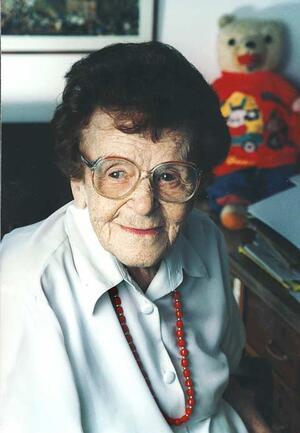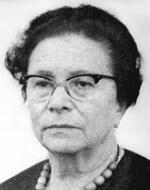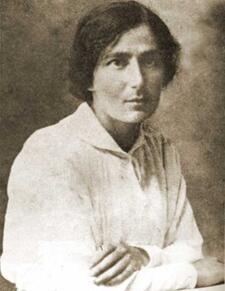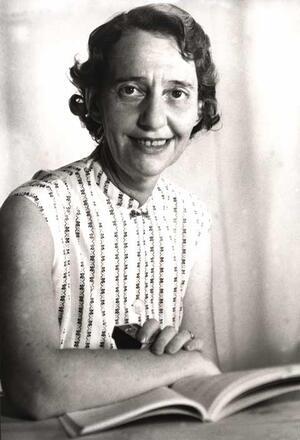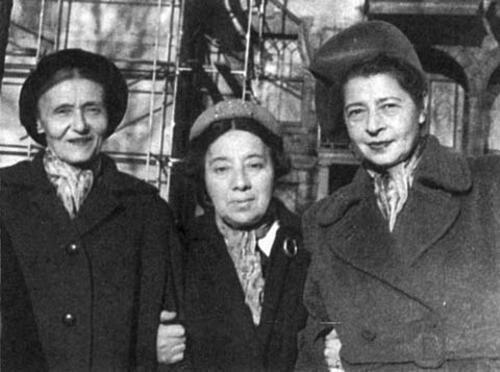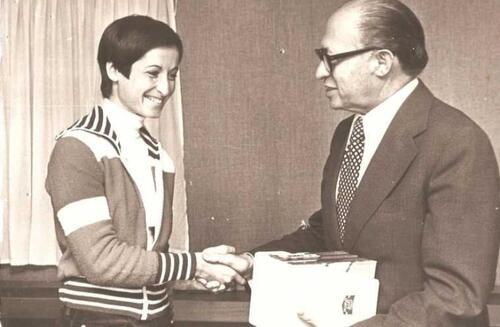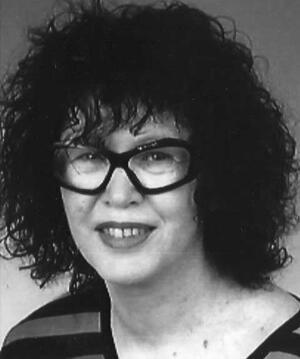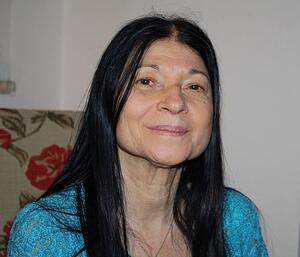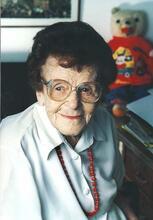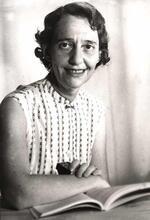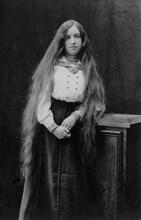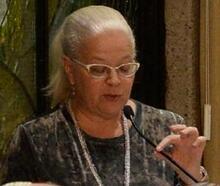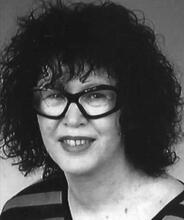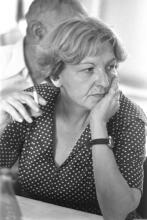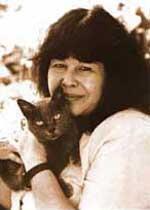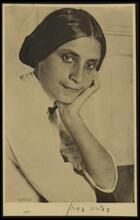Children's Literature in Hebrew
Israeli children's literature was born in the Diaspora as an artistic expression of modern Jewish nationalism; it offered the separated Jewish communities a unified language (Hebrew) and vision and common images, participating actively in facilitating the construction of a national collective self as an "imagined community." These motives fueled the literary works of the first generation of women authors who immigrated to Palestine. They continued to disseminate Hebrew as a secular language in both Palestine and the Diaspora and created a new prototype of the child as a native born "child of nature," later known as the sabra. Israeli children's literature had a dual mission: political/ideological and artistic. In the early 21st century, new themes were introduced, such as fantasy and "otherness," LGBT literature, multiculturalism, and Israeli-Palestinian relationships in time of war and terror.
Introduction
The prevalent view among scholars as to why a separate children’s literature developed in seventeenth-century Europe is derived from the widely acknowledged theory proposed by Philippe Ariès in 1960, which drew a direct connection between “the discovery of childhood,” that is, the perception of the child as a child and not as a miniature adult, and the emergence of the genre. However, texts were written especially for children even prior to the seventeenth century, although, in keeping with the times and pre-Gutenberg-era technology, these were naturally few in number.
The majority of children’s stories and songs were absorbed via the oral tradition, a method that corresponded to that of the adults, who were unaccustomed to individually accessible written literature. Among the factors that paved the way for literary works directed at children were the spread of printing and the reduction in the cost of the printed word; the rise in the power of the written word, which led to a change in reading habits, and in the transmission of tradition and messages; the economic, urban and educational changes that took place in modern Europe; and above all, the emergence of romanticism and nationalism. Children’s literature served as an instrument of political and ideological socialization, with the goal of transforming literate children into adults possessed of a national and political identity. All of these aspects are clearly reflected in the developmental patterns of Hebrew children’s literature at the end of the eighteenth century; likewise, the ways in which this literature became established illustrate the factors that led to the institutionalization of children’s literature in Europe in general.
One cannot approach the task of describing children’s literature in pre-State Palestine, and later Israel, without addressing the century of children’s literature in Hebrew that first emerged in Europe and flourished as a result of educational, national, and political factors. This Zionist literature, penned in Hebrew in countries where the Jews spoke German, Italian, Polish, French, or Russian, sought to transform the holy tongue into a secular language. In particular, it sought to establish a uniform language shared by the Jewish communities dispersed over the European continent, offering them a collective repertoire of images and symbols through which they could conjure up a vision of their existence as a unified, political “imagined community” (to use Benedict Anderson’s term).
With the beginnings of Lit. "ascent." A "calling up" to the Torah during its reading in the synagogue.aliyah to pre-State Palestine in 1882, the new settlers maintained their ties, through children’s literature, with the literary center of the genre in Europe, which at the time encompassed writers, poets, journals, publishers, textbooks, and works of literature. Concurrently, they brought about two new developments in Palestine: the transformation of written Hebrew in poetry, drama, and story into a language of literature and an everyday spoken language; and the structuring of a new fictional reality centered around an imagined child-protagonist who represented that generation’s dream of seeing its future image reflected in the figure of the young Hebrew child who would grow up to be a “new man.”
Children’s literature in Palestine strove to be a mirror of sorts. It offered readers in Palestine and the Diaspora a political portrait of themselves, in the form of a collective Hebrew-speaking “self” springing forth from the soil of the Homeland as if erasing thousands of years of Exile in which the Jew had been seen as a wandering, uprooted, ancient, persecuted figure. This portrait of the indigenous native-born son, the legitimate offspring of the earth, fascinated the reading public, just as the biblical, oriental territory of the Land of Israel sweetened the present for the dreamers of Palestine and the Diaspora and embellished the future.
The dialogue that took place between the two centers of children’s literature—the one in Europe and the other in Palestine (later joined, for a brief interval, by Hebrew children’s literature written in North America)—engraved in the collective consciousness on the one hand, the portrait of the dying shtetl in a nascent Hebrew that was on its way to becoming an aesthetic, national, and political language, and on the other, a vision of the future in the form of a dream-like, intoxicating experience of the Land of Israel.
The Beginnings of Children's Literature in Palestine: 1901–1930
In the early twentieth century, at a time when the Jewish community in Palestine was engaged in a struggle over the use of spoken Hebrew in the classroom (where French, English, or German was the language of instruction and pupils were not offered original Hebrew literature), children’s literature in Hebrew was actually flourishing in Europe. The first female author to write in Hebrew for children in Russia was Sarah Foner, born in Lithuania in 1854. Some fifty years later, Devorah Baron began to publish children’s books in a rich Hebrew, with realistic descriptions of children’s lives in the shtetl. In order to facilitate matters for her audience, who were not Hebrew-speaking, the more difficult words were translated into Yiddish and Russian in the margins of the text, a common device that testified to the lengths taken to implement the historical revolution of reviving the Hebrew language and disseminating it among children and adults alike.
Devorah Baron was born in Uzda, in the Minsk district of Russia, on December 4, 1887, and died in Tel Aviv on August 20, 1956. She received her Jewish education from her father, Shabtai Eliezer Baron, the rabbi of the shtetl, but like many Jewish young people of her generation, she left her place of birth and supported herself while completing her high school studies. She immigrated to Palestine in 1910, leaving a legacy of over forty stories for adults that appeared in Hebrew magazines.
Baron can be considered the first feminist author writing in Hebrew for adults and children. Her stories, written from a feminine perspective, shed light on the lives of women in the shtetl in Belarus with all their suffering, oppression, marginalization, and exploitation at the hands of Jewish male society. Her stories for adults and her position as editor of the literary section of Ha-Po’el ha-Za’ir (The Young Worker) in Palestine earned Baron her status in the pantheon of Hebrew literary figures, but her role in children’s literature was not insignificant. Baron published her first stories for children in the weekly children’s magazines that appeared in Europe in the early twentieth century, including Olam Katan (Small World) in Warsaw, Ha-Hayyim ve-ha-Teva (Life and Nature) in Vilna, Ha-Perahim (The Flowers) in Lugansk, and the daily He-Haver (The Friend/Comrade) in Vilna. But even when she lived in Tel Aviv she made a point of depicting the milieu of the far-off Jewish shtetl, as if seeking to perpetuate this disappearing lifestyle in the Jewish consciousness.
In her story “Be-Eizeh Olam” (In which world), published in 1911 in Jaffa in the monthly Moledet (Homeland) for young people, edited by S. Ben-Zion, Baron offers a realistic portrayal of the final days of a dying father leaving behind a widow without means or education and a twelve-year-old daughter. The story, written from the point of view of the young girl, describes the struggles of the mother and daughter, who leave the shtetl and earn a living as maids in wealthy homes. Despite her hardships, the daughter is determined to save herself and her mother from the clutches of poverty and humiliation through her dream of acquiring an education. This dream fades with the death of the mother but is revived with the hope of immigrating to Palestine and embarking, like her friend David, on a new life of labor, love, freedom, and independence. This hope is like a vision confronting reality and undermining its foundations; indeed, the young girl becomes confused as to which world she actually inhabits. Will the dream of Erez Israel become a reality?
Humanity, love, and the process of growing up, as a counterpoint to the realities of life, are an integral part of Baron’s stories for children. The setting of the shtetl allows her to present the unvarnished truth of childhood, with all its joys and sadness. Above all, the feminine perspective stands out, even in her children’s stories, in the form of her young female protagonists. In 1905, at the age of eighteen Baron published the short story “Ha-Rahmaniyah” (The compassionate one) in Ha-Hayyim ve-ha-Teva (Life and Nature, Vilna), centered around the young daughter of a rabbi who rebels against the traditional girls’ roles and openly declares her desire to be friends specifically with boys: “Children’s games held no interest for her: She never played with dolls, and those girls who did play with dolls, she always referred to as ‘mothers.’… Thus she played with the boys in the courtyard of the synagogue, gathering stones with them and playing against them while blocking out the sound of the hurtful comments, like: ‘Pfui, it’s not right for a girl to run wild like a ‘boy.’” Despite her acceptance by the boys, her feminine compassion distinguished her from them and made her more exposed and vulnerable. Unlike the boys, the girl was concerned about the poor, the handicapped, and the lame, as well as defenseless animals. She tried to bring home a dog that bit people, but her father chastised her, arguing that one didn’t raise a dog in the home of a rabbi. She secretly brought food to the injured dog, but then life was revealed to her in all its cruelty: The dog starved to death; female compassion could not help save him.
In Palestine, Baron’s short stories for young people were published in collected form in Mi-Sham (From there, 1946), while the first edition of her entire body of stories was published as Parshiyot (Episodes, 1951). Her stories for young people were included in readers for junior high school students, offering them a glimpse into the world of the shtetl in Galus (the Diaspora) as part of Baron’s poetic universe. The shtetl, reconstructed in the heart of pre-State reality, stood in stark contrast to the prevailing literary trend that marked the emergent children’s literature of Palestine; the latter sought to erase from the collective consciousness the memory of the Jewish/Diaspora-encumbered past and to plant in its stead the seeds of a new childhood memory that would blossom in the soil of the Homeland.
Hemdah Ben-Yehuda, who immigrated to Palestine some twenty years before Baron, is a prime example of this approach; coming to Palestine to take the place of her sister Devorah, the wife of Eliezer Ben-Yehuda, who had died leaving behind young orphans, she became involved not only in the dissemination of the Hebrew language in Palestine and the Diaspora but also in the creation of the prototype of the later literary figure of the native-born sabra, who evolved against the backdrop of a new milieu and replaced the image of the Jewish Diaspora child who was not a product of Palestine.
Hemdah Ben-Yehuda was born in Lithuania on July 4, 1873, and immigrated to Palestine in 1892. She quickly became the right hand of her husband, Eliezer Ben-Yehuda, in the publication of his dictionary and his newspaper, and primarily—at his request—in spreading Hebrew to children through the writing of children’s stories. Two principal themes recur throughout her stories: the importance of language in consolidating a nation, and the creation of the character of the desirable native-born child as the antithesis of the repugnant child of the Diaspora. The first theme is evident in the article “Aniyim Merudim” (Miserable paupers), which appeared in the third issue of the illustrated weekly for children, Olam Katan, published in Warsaw in 1901. Here, Hemdah Ben-Yehuda describes Jewish children in the Diaspora as impoverished even when they come from affluent backgrounds: “Paupers they are, wretched and miserable, for even their language is borrowed from others! … This language, the pride of all people … that separates them from the beast … is foreign to our Jewish children. It is not their own.”
Another story that appeared in Olam Katan in 1901 advances the same idea but this time in literary form. In “Bubah Ivriyah” (Hebrew doll), a doll is used as a device for teaching Jewish children their “proper” national identity. The story describes a porcelain doll sent from Palestine to five-year-old Suzanne in Paris. The doll speaks neither French, German, nor English—only Hebrew, the language of the children of Palestine. She cannot walk because she wishes to walk only in Jerusalem. She cannot close her eyes because “she looks day and night to the East … where Palestine lies.” In short, the doll is miserable at being cut off from the heart of her national and cultural existence. The Hebrew doll quickly becomes the best friend of little Suzanne, who promises her (and the reader) that they will soon return to Palestine, where they will both be able to speak, walk, and open and close their eyes. The story ends with Suzanne hugging her doll, which was sent into exile against her will, with the promise to the parents reading the story to their children that the political and national future lies with the next generation, with the children who seek to live in Palestine. This promise is embodied in the imagined figure of the children of Palestine, who are presented to the readers in Europe as the ideal—proud, independent, heroic children of nature.
Ben-Yehuda’s next collection of stories, Me-Hayyei ha-Yeladim be-Erez Israel (From the lives of children in Palestine), published initially in Olam Katan (1902, 1903) and later in Jerusalem (1903), was followed by the collection Bi-Yemei ha-Bazir (In the grape-picking season, 1907). These stories laid the foundation for a new existence in the Land of Israel, fashioning the desired model of what was to become the mythological “sabra.” The story that opens Me-Hayyei…, entitled “Yisrael,” centers around a boy by that name living in the Old City quarter of Jerusalem, whose life is devoted to the study of Torah. Yisrael, who is continuing the life of Diaspora Jewry in Palestine, meets a tragic end when he is beaten to death for taking time from his learning to pet an impure beast, a small donkey that he happened across.
In contrast to this tragic, pathetic figure, Ben-Yehuda offers the desirable character of Zerubavel, a village boy who became the prototype of the native-born child, later known as the “sabra,” who springs forth from the earth and is tough, daring, and full of life. He learns at a modern kindergarten instead of a talmud torah, sings only in Hebrew, and excels at gymnastics. This suntanned child, son of “a legendary vineyard-keeper, a farmer of the Land of Israel,” climbs trees, chases toads, and rebels against the preaching of his mother, who is always reproaching him with the words: “Forbidden! Forbidden!” To this, answers Zerubavel, rebelling against the older generation: “And if everything is forbidden, why am I alive?” It is Zerubavel the hero who will build the Temple and serve as a beacon of identity to the children who fall into the trap of the imagined, exemplary figure presented to them by adults in the works of so-called children’s literature.
Other works by Hemdah Ben-Yehuda include Ha-Lohem ha-Me’ushar (The happy warrior, 1935), which recounts the life of Eliezer Ben-Yehuda; and Nose ha-Degel (The standard bearer, 1945), which offers a portrait of Ithamar Ben-Avi, considered “the first Hebrew child.” Hemdah Ben-Yehuda died in Jerusalem on August 26, 1951.
Hemdah Ben-Yehuda and Devorah Baron, among the first women authors of children’s literature in Palestine, represent two different patterns with respect to place, as well as two models of childhood. One gazes with nostalgia upon the dying shtetl of Galus (the Diaspora), with its cast of struggling, hurting children, while the other rejects this nostalgic picture, positing in its place a new landscape and a new childhood against the backdrop of a Palestinian existence that paints the real in the dream-like tones of the ideal. With the shifting of the literary center from Europe to Palestine, the second model overshadowed the first, and this view gained acceptance among the public, who saw it as a faithful reflection of their new life in the Homeland. The figure of the native-born son, crafted for the first time in the stories of Hemdah Ben-Yehuda, was perpetuated in the work of her successors, who began to gradually chip away at the masculine predominance that marked the early days of Hebrew children’s literature in Europe. These women writers and poets, writing in a natural and flowing Hebrew, banished the last remnants of didactic language from the pages of children’s literature and had a hand in creating the “golden age” of Hebrew children’s literature in pre-State Palestine.
Consolidation and Diversification of Children's Literature in Israel: 1930
To a considerable degree, the consolidation of children’s literature in Palestine in all its varieties can be credited to the children’s weeklies, which not only fostered a generation of young readers but also welcomed and encouraged women authors and prominent illustrators such as Tirtza Tanny (1920–2009) and Bina Gvirtz (1913–2008), who developed their artistic careers in the weeklies. The initiative behind the founding of Davar li-Yeladim (A Word for Children), one of the most influential children’s weeklies in Israel (and, appearing for more than fifty years, among the longest-running in the world), originated with the author and editor Bracha Habas, referred to as “the first professional female writer/editor in Palestine” (Ofek 1988).
Bracha Habas (Lithuania, 1900–Haifa, 1968) immigrated to Palestine in 1907. Alongside her work as a journalist and editor for Davar li-Yeladim she published children’s literature of the realist genre that centered around country children who gradually replaced the pale children of the heder. In Yaldei Amal (Children of toil, 1937) and Giborim Ketanim (Little heroes, 1934, 1960), courageous, daring children embodied the dream of a “muscular Judaism.” Yeladim Muzalim (Rescued children, 1945) focused on children who had survived the Holocaust and the destruction of Europe’s Jewish communities. Habas, sharing her literary talents with Davar li-Yeladim and encouraging its continued publication, together with the editors and editorial board, created a literary springboard for the early works of the women writers and poets of what is considered the “golden age” of children’s literature in Israel, including Anda Pinkerfeld-Amir, Lea Goldberg, Miriam Yalan-Stekelis, Yemima Tchernovitz-Avidar, and others.
Anda Pinkerfeld-Amir (Rzeszow, Galicia, 1902–Tel Aviv, 1981) immigrated to Palestine in 1920 at the age of eighteen. Although her mother tongue and the language of her earliest works for adults was Polish, she soon began to write in Hebrew, and her poems appeared in the first issues of Davar li-Yeladim (“Ma’aseh be-Zefardea u-ve-Magafayim” [Tale of a frog and boots] was published in 1931). In 1929, before Davar li-Yeladim came on the scene, she published her first poems in Gilyonot le-Gan ha-Yeladim (Booklets for kindergartens), edited by the writer and poet Levin Kipnis, who sought to introduce educational material written in Hebrew into the preschool curriculum.
Clearly, Anda Amir and her fellow women writers contributed to the establishment of a natural language that flowed straight off the pages of the booklets and weeklies into the kindergartens and classrooms and from there, via the children, into the homes of their parents—members of the Third and Fourth Aliyah who were not always fluent in Hebrew. In addition to this benefit, which was important in and of itself, the women writers of the period brought diversity to Hebrew children’s literature, creating a variety of genres in poetry, drama, and prose, and in so doing, reflecting—and shaping—the lives of the younger generation.
Amir, considered the first woman poet of pre-State Palestine, was a writer of children’s poems. She created humoristic poetry that combines imagination, reality, and the absurd as it arises from unexpected situations, and especially from the personification of objects and animals rooted in reality. Her numerous poems were collected in several books, including Al Anan ba-Kevish (A cloud on the road, 1933); Shirei Yeladim (Children’s poems, 1934), which was awarded the Bialik Prize; Haruzim Alizim (Happy rhymes, 1944); and Ani Shar Me’ushar (I sing happily, 1973).
Amir also developed the dramatic genre in her plays, which were crafted specifically for holiday and seasonal celebrations in schools, including: Nerot Hanukkah (Hanukkah candles, 1934); Kinus Kufsa’ot ha-Keren ha-Kayemet (Gathering of the Jewish National Fund boxes, 1938); Mishpat Benei Ya’ar (Trial of the forest children, 1959); and monologues on the months of the year, entitled Shneym Asar Ahim, Shneym Asar Yerahim (Twelve brothers, twelve months, 1940). Among the stories she wrote were “Ka-Eileh Hayu” (The way they were, 1953), which recreates the lives of those who fought in the Israeli War of Independence; “Sodi im Ahi ha-Gadol” (My secret with my big brother, 1958), telling of a boy who goes in search of his brother who was killed in the war; and “Ta’alulei Ayin Ahat Ikeshet” (Antics of an obstinate eye, 1958), inspired by a personal experience. Amir’s contribution to the diversification of children’s literature in Israel is also reflected in her translation of classics from the global repertoire of children’s literature. She adapted and translated Max and Moritz: A Story of Seven Boyish Pranks by Wilhelm Busch, Heidi by Johanna Spyri, and The Adventures of Pinocchio by Carlo Collodi, among others. In 1936 Amir was awarded the Bialik Prize for children’s literature and in 1978 she earned the Israel Prize, the most prestigious of Israel’s awards, for her landmark contribution to the shaping of children’s poetry in Israel.
In roughly the same year that Amir published her first poem for children, Rahel Bluwstein (known simply as Rahel) put out a collection of poems entitled Ba-Bayit u-va-Huz (At home and outside, 1930; reissued in 1974 and 2001). Rahel (Sartov, Russia, 1890–Tel Aviv, 1931) was famous primarily for her wonderful lyric poems for adults—poems that young people could also study and revel in. In the aforementioned collection, aimed specifically at young children, she paired short rhymed verses with pictures of animals (a dove, goat, fly, donkey, and so forth) drawn by the illustrator Wilhelm Schacht (1872–1940). Without intending to, she created “the first collection of Hebrew children’s poems by a woman poet.” In so doing, she led to “a breakthrough in children’s literature in Palestine” (Ofek 1988). The collection Ba-Bayit u-va-Huz, which was sold in toy stores and was only recently attributed to Rahel, attests to how children’s literature in Israel appropriated the writing conventions and the poetics of general children’s literature in targeting two- and three-year-olds, who are just starting on the road to familiarization with linguistic and visual imagery and the connection between these and reality.
Along with humoristic, educational and entertaining children’s poetry, this period saw the emergence of a realistic literature for preschool children, as well as adventure stories involving bands of friends aimed at school-age children and adults. Yemima Tchernovitz-Avidar, in particular, helped to establish these two genres. Tchernovitz-Avidar (Vilna, Lithuania, 1901–Jerusalem, 1998) immigrated to Palestine in 1921. As a result of her work as a kindergarten teacher, she published (in Gilyonot le-Gananot and Davar li-Yeladim) stories drawn from children’s experiences in kindergarten, at home, and in the neighborhood that served the needs of teachers and children alike. These stories were collected in Sipurim le-Ramah (Stories for Ramah, 1936); Muki ha-Shovav (Mischievous Muki, 1943, 1971); Savta Yazah me-ha-Halonot (Grandma went out the window, 1997), and others.
Tchernovitz-Avidar was famous primarily for her full-length books, which laid the foundation for the “band-of-friends” genre (sippurei havurah in Hebrew) that combined children’s adventures with daring, courage, and sacrifice. Both native-born children in Palestine, who lived at a time when the Yishuv (pre-State Jewish community) was called upon to defend its borders, and the children of immigrants from the Diaspora, growing up in a state experiencing constant wars, saw in these books a reflection of their lives and wished to be like these brave imaginary children. Shemonah be-Ikvot Ehad (Eight in pursuit of one, 1945), considered the first Hebrew novel of this type, describes how a band of kibbutz children took on the adults’ fight and captured a dangerous spy. This popular work, which was reissued in several editions, was translated into English and even adapted into a movie. The book’s uniqueness lies in the authentic description of a band of “sabra” children, which served as role models for young readers who saw the group as a desirable and exemplary image of themselves. Other adventure stories that won widespread popularity were Shnei Re’im Yazu la-Derekh (Two friends set out, 1950), Be-Ma’agal ha-Setarim (The secret circle, 1955, 1969), Migdalim bi-Yerushalayim (Towers in Jerusalem, 1968), , Rekhev Esh (Chariot of fire, 1979), and others. Like Tchernovitz-Avidar’s earlier works, her more recent books, which portray times of war and the struggle for independence, combine detective-adventure story lines with the atmosphere of a specific time and place, intertwining Zionist-nationalist ideology with general ethical values while avoiding the trap of didactic moralizing. Her contribution to the establishment of modern, original literature for children, coupled with her consummate translations of world literature (including The Wonderful Wizard of Oz by L. Frank Baum, The Adventures of Pinocchio by Carlo Collodi, and Alice’s Adventures in Wonderland by Lewis Carroll), earned Tchernovitz-Avidar the Ze’ev Prize (1983) and the Israel Prize for children’s literature, awarded her in 1984.
Three other important women writers—Miriam Yalan-Stekelis, Fania Bergstein, and Lea Goldberg—led the way toward formalizing and consolidating the field of children’s poetry. These writers contributed to the diversification of Israeli children’s literature through the addition of new genres that incorporated humorous poetry for children and realistic sippurei havurah and adventures stories for older children and teenagers.
Miriam Yalan-Stekelis immigrated to Palestine in 1920 and published her first poem for children in 1937 in the weekly Davar li-Yeladim. She quickly became the leading woman poet in the realm of confessional lyric poems for children, with female protagonists who shared with the reader the joy and pain, frustrations and victories of childhood. Alongside her lyric poems, Yalan-Stekelis developed the genres of play-songs and lullabies for young children, in addition to writing poems of nationhood and longing for the Land of Israel and stories set variously in the Diaspora and pre-State Palestine. The entire corpus was collected in three volumes, directed at three separate age groups and published from 1958 to 1963 under the titles Shir ha-Gedi (Song of the kid), illustrated by the artist Zila Binder (1919 – 1987), Yesh Li Sod (I have a secret), and Be-Halomi (In my dream).
Yalan-Stekelis’s translations exposed young readers to classics written by the greatest children’s authors in the world, among them Samuel Marshak’s Lady With a Puppy (Geveret im Kelavlav, 1943), Erich Kastner’s The Animals’ Conference (Azeret ha-Hayot, 1958, 1979), and P. L. Travers’ Mary Poppins (1968), as well as Russian folk tales. For her life’s work, Yalan-Stekelis was awarded the Israel Prize for children’s literature in 1956.
Fania Bergstein (Szczucin, Poland, 1908–Kibbutz Gevat, 1950) immigrated to Palestine in 1930 and published her first poems in Davar li-Yeladim. As a member of a kibbutz, she brought to children’s literature the authentic experience of rural life on a farm, describing the direct encounter between children and animals, the farming implements, and the smell of the field. A collection of her poems entitled Bo Elai, Parpar Nehmad (Come to me, sweet butterfly, 1945), uses short verses of only four lines each to depict the young child’s first encounter with nature, the countryside, and rural reality. The larger collections, published posthumously, among them Nisa el ha-Sadeh (Let’s trek to the field, 1952), illustrated by Michal Efrat (1926 – 2017); Shir Yadati (I knew a song, 1953); Beyn Shirim ve-Ganim (Between songs and gardens, 1956); Haruzim Adumim (Red rhymes, 1956); and Eynayim Semehot (Happy eyes, 1961), include longer stories and also poems. Intended for child readers, these collections depict in a minimalist, pared-down fashion, scenes of reality and fantasy, dreams, pain, joy, and experience. The poem “Hipushit” (Beetle) demonstrates the use of reduction as a device to expand, presenting the surface reality of the encounter between the child narrator and the weakened beetle and, simultaneously, the underlying possibility that he sees in it the reflection of his fears and his existential state in the real world of adults: “I have a teensy beetle/Poor thing, it is so little!/It so much wants to escape—oh deary/But can’t—it is too weary” (Eynayim Semehot, p. 30).
In contrast to the lyrical and impressionistic poems of Fania Bergstein, Lea Goldberg preserved the sophisticated psychological tone found in the works of Miriam Yalan-Stekelis. Goldberg received her doctorate in Semitic languages from the University of Bonn and immigrated to Palestine in 1935, becaming a professor of comparative literature at the Hebrew University of Jerusalem. Goldberg, who holds an honored place in the pantheon of modern Hebrew poetry, was a posthumous recipient of the Israel Prize for literature, awarded for her entire body of work: research papers, translations, and original works of poetry, prose, and drama. She also devoted her energies to producing original children’s literature, studying its essence, and mapping its unique poetics and esthetics; her academic observations were gathered in a book entitled Beyn Sofer Yeladim ve-Kor’av (Children’s author and his readers, 1978).
Like the women writers who preceded her, Goldberg published her first poems in Davar li-Yeladim, shortly after her aliyah. In 1936 she became the literary editor of the weekly, extending her reach to lyric poems for children, nonsense rhymes, and popular comics that marked an innovation in Hebrew children’s literature (“Uri Muri,” 1937; “Uri Kaduri,” 1938; “He-Hamor he-Hakham,” (Little Donkey, 1940); “Efroah Bilbulmoah,” Withering Chick, 1942); “Mar Guzmai ha-Badai,” (Mr. Guzmai Fantasizer, 1946) and others.
In 1943 Goldberg founded the Ankorim publishing house for children, where she edited over 30 children’s classics even as she published more than 46 children’s books of her own. Goldberg’s poems for children, combining poetry, esthetics, humor, and musicality, embrace a wide range of genres, including lyric and confessional poems, poems of nature, narrative-descriptive poems, nonsense poems, and contemplative lyrical poems. The latter, depicting the inner world of the child with all its longings, joys, and frustrations, were collected into Mah Osot ha-Ayalot (What do the does do?, 1949), Zerif katan (A little shack, 1959), and Bo’u Ananim (Come, clouds, 1982), while her nonsense rhymes and stories in verse were published in such books as Ha-Bivar he-Aliz (The merry menagerie, 1947, 1976); Gan Hayot (Zoo, 1951, 1970); Ayeh Pluto (Where’s Pluto, 1957); Banim, Banot, Bubot (Boys, girls, dolls, 1968); Mar Guzmai ha-Badai (1977); and Uri Kaduri (1984).
As in her poems, Goldberg’s stories present the world of childhood with its ever-present imagination and dreams. Yedidai mi-Rehov Arnon (My friends from Arnon Street, 1943), for example, is the story of a group of children who plant candies in the ground and wait with anticipation for a sweet harvest. Her work Nissim ve-Nifla’ot (Nissim and Nifla’ot, 1954, 1976) describes the friendship between a child, a monkey, and a woman writer, interweaving fantasy and reality. Malkat Sheva ha-Ketanah (Little queen of Sheba, 1956) describes the integration difficulties of a young girl who has immigrated to pre-State Palestine. Dirah Lehaskir (Flat to let), first published in 1959, is a perennial favorite that has been reissued in numerous editions; allegorically, it calls for good relations among neighbors and for choosing a life of peace over materialism, racism, and the degradation of others.
Goldberg translated into Hebrew assorted works from Russian children’s literature (in particular, titles by Samuel Marshak and Korney Chukovsky as well as folk tales); Ha-Melekh Zav-Zav (Dr. Seuss’s Yertle the turtle, 1965); poems by Kadya Molodowsky of Odessa; sections from The Arabian Nights; and the tales of Hans Christian Andersen and the Brothers Grimm. In doing so, she enriched and brought variety to local children’s literature and opened a window for the Hebrew reader onto the literature of the world’s children.
While Lea Goldberg, Anda Pinkerfeld-Amir, Yemimah Tchernovitz-Avidar, Miriam Yalan-Stekelis, and Fania Bergstein were pivotal figures in children’s literature, there were other important women authors who enriched the genre with their poems and stories for children. Some of these were kindergarten and school teachers, whose familiarity with the needs of young children and with their world led them to expand the literary repertoire of preschool and school-age children. They include Bilha Yaffe (Kovno, Lithuania, 1891–Jerusalem, 1961), who wrote stories with a message in addition to poems and songs that have stood the test of time; Ella Amitan-Wilensky, who composed children’s songs, among them “Bi-Medinat ha-Gamadim” (In the land of the dwarfs), sung by kindergarten children to this day; Rivka Davidit (Bessarabia, 1908–Tel Aviv, 1970), who also wrote poems and stories for preschool children; and Rivka Gurfein (Galicia, 1908–Kibbutz Ein Shemer, 1983), a kindergarten teacher, whose protagonists were children of the kibbutz and of nature.
The second generation of women writers of children’s literature in Israel have a number of characteristics in common: All were born in Europe, immigrated to Palestine in their twenties, quickly adopted the Hebrew language, and brought about a separation from the legacy of the Diaspora while helping to forge a new cultural heritage with local roots. These writers were modern, educated women, trained in education, psychology, and art; some also worked as teachers. Their greatness lay in their ability to construct a portrait of Israeli childhood that was perceived as the authentic world of the Palestinian Jewish child. As such, their work gained immediate acceptance and played a dual role in reflecting, as well as shaping, the behavioral norms and the esthetic, Zionist, moral, and political perspectives of Israel’s children. These women writers, poets, and literary scholars led the way to the golden age of Israel children’s literature while creating an original and varied literary corpus encompassing a range of genres (poetry, prose, drama, comics, literature in translation) coupled with academic research that formed the basis for understanding the unique poetics of Israeli literature and provided the tools for the literary, critical and esthetic evaluation of its form and substance as well as its objectives. As a result, not only was Israeli children’s literature established and consolidated but a solid foundation was laid for the study of the standards and characteristics of this literature.
Constructing a New Cycle of Childhood in Israeli Children's Literature: 1970s through Early 21st Century
The children’s literature produced in Israel before the 1970s reflects, above all, the determination of the European-born generation who emigrated to Israel to apply themselves to the task of building an extensive body of literature based on solid artistic norms that could appeal to the “new” child being raised in the Land of Israel. In most cases, those who carried the torch of children’s writing from the 1970s onward had in their childhood been consumers of that same literature, absorbing its content, style, language, and distinctive conventions. During their adolescence, they were the ones who took notice of the new winds blowing in the field of children’s literature in Europe and the United States, heralding the “incursion” of feminism, bibliotherapy, graphics, liberalism, and subversion into the heart of global children’s literature. Unlike their predecessors, the new women writers of the 1970s and beyond were not of necessity committed to the educational-Zionist-nationalist cause and, as such, their attitudes were susceptible to non-local influences.
The immediate expression of this fact can be found in their subject matter, their style, and, primarily, in the persona of the child that they constructed. All at once, the sophisticated level of Hebrew that the writers of the “golden age” had so struggled to establish was replaced by standard usage or deliberately “bare-bones” language studded with errors and popular slang that were supposedly a more faithful representation of the “authentic” Israeli child. The natural landscape that had been part and parcel of the portrayal of the Homeland gave way to an inner, personal “emotional” vista or a portrait of the urban milieu, while heroic child protagonists at times became anti-heros who expressed their fears, frustrations, joy, failure and “outsider” status. In the spirit of children’s literature in the West, subjects such as death, divorce, violence, and acceptance of “the other” slowly penetrated the texts. At the same time, criticism—rooted in the “pedagogic” approach that holds adults responsible for the education of children—was being directed against those same adults, who were exposed in all their failure and now came under the critical eyes of the children, who simultaneously took upon themselves the responsibility for both their own education and that of the adults. Children’s literature, which in the hands of the previous generation had been an instrument of socialization and education, thus became a means for adults to educate themselves and rectify their childhood experiences through the literature they wrote for their children.
By the threshold of the 21st century, Israeli children's literature was ripe to break boundaries in terms of both content and visual-artistic aspects. Having originated in the Diaspora at the service of the national-Zionist idea, it developed into a unique wide-ranging art that was commercial and popular, as well as artistic, poetic, and radical.
The institutionalization of children’s literature in Israel expanded the circle of women authors writing for children, with the number of women writing and studying children’s literature from the 1970s onward for the first time surpassing that of the men. Moreover, in contrast to the previous era, the women writers who took their place in the field did not see the genre as a pedagogic, national, and didactic tool but, first and foremost, as a means of individual and artistic expression.
A number of women writers had one foot planted in the second generation (with those who established Hebrew children’s literature) and the other in the third generation. Among them was the educator, writer, and scholar of children’s literature Herzliya Raz (Odessa, 1921-Tel Aviv, 2016), who immigrated to Palestine at the age of two. In its style and content, her work reflects the perception of childhood that typified the writers of the second wave, with its scenes of nature, its idyllic atmosphere, and the vision of a “soft,” sheltered childhood. Raz authored one of the first feminist books in Israel, Ziv’ei ha-Emek Rakim (The colors of the valley are soft, 1959, winner of the Barash Prize). Among her works for children are Asarah Haverim (Ten friends, 1956), which presents a band of children who go on a hiking trip; Le-Noa: Sipurei Mishak (For Noa: Stories for play-acting, 1958); Humi (1960), about a colt who becomes a guard horse; Mahberet ha-Kishkushim shel Ahoti (My sister’s doodle book, 1982); Ma’aseh be-Akhbar she-Mehapes Kalah (The mouse who looked for a bride, 1991); and Ha-Na’arah she-Ahavah Sakanot (The girl who liked danger, 2000), a collection of contemporary folk tales about young girls, women, and mothers, recounted from a feminist perspective. Raz’s contribution to the study of children’s literature in general and the folk tale in particular is reflected in her many articles on file at the institutes for the study of children’s literature in Israel.
Tikva Sarig (1915–1997), who was born in Jerusalem and lived on Kibbutz Bet ha-Shittah, describes the life of children on kibbutz and in Jerusalem in works such as Male Sippurim (Tons of stories, 1973) and Ima Aggadah (Mother legend, 1980), but her major contribution lies in the adaptation of stories drawn from traditional Jewish sources, such as tales of the sages, and in presenting the Jewish festivals. In an appealing and readable style, she stimulates interest in, and grants legitimacy to, tales of Jewish heritage while making them attractive to children and teachers. A collection of tales of the sages entitled Lanu mi-Shelanu (For us from our own, 1976) was followed shortly by the stories Ha-Ba’al Shem Tov Ba (The Ba’al Shem Tov is coming, 1976) and Eliyahu ha-Navi Hineh Hu Ba (Here comes Elijah the prophet, 1977). She published a collection of hassidic tales, He-Hasid ve-ha-Hasidah (a punning title, which could be translated as either “A male and female Hasid” or “A Hasid and a stork”) in 1978, as well as stories of humor, fun, and imagination such as Hershele (1981); Ha-Helmna’im (The People of Chelm, 1982); Ushki Bushki (1980); and Sod be-Sanduk (A secret in Sanduk, 1983).
The writer Rivka Elitzur (1920–1979) provided children who might not have received a religious education with the best of the tales of the sages and stories of holidays and festivals, while Yocheved Sachs (b. 1938), a sixth-generation Jerusalemite, was among the pioneers of the religious/ultra-Orthodox genre that developed into a separate trend after 2000. Between 1972 and 1981, Sachs published nine volumes of stories entitled Mi-Sippurei Yerushalayim (Jerusalem stories) that portray different generations in the Holy City. A collection of plays entitled Ha-Masakh Oleh (Curtain Up! 1976–1980) immortalized the story of the Jewish festivals, while the two volumes of the series Lekah Tov (A worthwhile lesson, 1978–1980) spread the message of the rabbinic tradition and its moral lessons to young readers.
A counterweight to the stories of religious heritage are the adventure and detective stories that capture the hearts of children in Israel, as they do the world over. Tamar Borenstein-Lazar (b. 1929), a third-generation member of one of the founding families of Moshav Ein Gannim, has written some 200 stories in various genres—modern folklore, adventure, humor, and havurah—that have proved enormously popular. One of her major successes has been the Kofiko series (1958 onward), which centers around the antics of a mischievous monkey who gets involved in improbable situations, eventually coming out a hero. The popularity of the Kofiko stories inspired her to write a second series (appearing since 1960), entitled Chipopo, in which the title character’s adventures extend far beyond Israel’s borders, all the way to France, Africa, and Alaska. With the success of the Mischievous Kofiko series and The Adventures of Chipopo in Kungu, Borenstein-Lazar turned to writing stories with human protagonists such as Suleiman the Arab and his friend Dani the Israeli (Alilot Suliman ve-Dani [Stories of Suliman and Dani], 1969–1970) as well as a series of books of a didactic nature dealing with the Jewish holidays, Shai la-Hag (A present for the holidays, 1977).
Galila Ron-Feder-Amit (b. Haifa, 1949) is known for her adventure series built around brave young children or heroic figures drawn from the pages of history. Yaldei ha-Shekhunah ba-Mahteret (The neighborhood kids in the underground, 1971), for example, described the adventures of a group of young boys from Jerusalem in the pre-State underground during the British Mandate, while the ten volumes of her Yeladim Almonim (Unknown children), which appeared during the 1970s, presented a group of child-protagonists who come to the aid of the underground fighters in their struggle against the British. Her popular Jinji (Redhead) series (1980–1983) attracted a large audience of children who wished to identify with the brave hero-detective and the exciting life of his band of friends. Along with these group adventure yarns, Ron-Feder-Amit wrote biographical stories that exposed her young readers to heroes of the Israeli army and the pre-State underground, such as Ha-Mored (The rebel, 1973), which painted a portrait of Avraham (Ya’ir) Stern, leader of the Lehi group (Fighters for the Freedom of Israel), or Ba-Or u-va-Seter (In the open and in secret, 1981) about Ze’ev Jabotinsky, founder of the Revisionist movement.
Realistic historical adventure literature based on events and protagonists tied to a particular time and place continues a longstanding tradition, despite the fact that the style and language change with the spirit of the times and the tastes of the audience. A welcome refuge for young readers attracted to works of suspense, mystery, and heroic deeds, this literary genre continues to exist alongside other forms of literature rescued from the clutches of nationalist-Zionist ideology. The popularity of these works—in fact their very existence—attests more than anything to the varied nature of children’s literature in Israel, which simultaneously embraces a range of literary genres that conform in different ways to the demands of time and style. From this standpoint, the realistic adventure stories preserve the social-national aspect of the reference group and, as such, encompass stories of group adventure, war, heroism, and the struggle for social justice, reflecting norms that ostensibly lost their relevance in a time of individualistic “me” literature.
Esther Streit-Wurzel (1932-2013) is among the most important and outstanding of the women authors who wrote in a realistic style for young people. Her plots are closely connected with historical events, which serve as their backdrop. Her work Min ha-Mezar (From the depths, 1963, 1981) contains echoes of the Holocaust in Europe, while the struggle for Israel’s independence is reflected in the adventures of the young Gadna (pre-army youth group) members in Na’arei ha-Mahteret (Boys of the underground, 1969). At the same time, her stories of adolescent love and group life in high-school dormitories became favorites in such works as Uri (1976) and Alifim (Froshies, 1981), which earned her the Ze’ev Prize for children’s literature. Her talent for fascinating and realistic “slice-of-life” stories is also on display in her later works, including Shahar (Dawn, 1991), Shivat ha-Manulim (The seven locks, 1995), and especially Rig’ei ha-Or (Moments of light, 1997), which is based on actual events but remains relevant to adolescent readers making their way in a contemporary world rife with violence, drugs, deprivation, betrayals, divorce, death, and war. Despite grim reality, the book is filled with an optimism that promises young people a light at the end of the tunnel. It is important to note here the shift from Zionist-historical realism to the portrayal of present-day reality.
Devorah Omer (1932-2013), author of such stories for preschoolers as Migdal shel Kubiyot Baniti (I built a tower of blocks, 1976), Ha-Neshikah she-Halkhah le-Ibud (The kiss that got lost, 1978), and Lo Mithashek Li (I don’t feel like it, 1982), greatly enhanced the breadth and depth of realistic literature for young people. Her skill at shaping characters drawn from Israeli history books, or adolescent characters whose lives are interwoven with a particular time and place, made her books popular among young people and adults alike. Dapei Tamar (Tamar’s diary, 1959), the diary of a young girl growing up on a kibbutz, originally appeared in serial form in the children’s weekly Davar li-Yeladim. It was published soon after as a book, followed by other volumes that described the adolescent struggles of the young girl in Israel and later in America, where she traveled with her parents. Ani Etgaber (I shall overcome, 1970) portrays the life of a young girl stricken with polio who tries to overcome her limitations. Ha-Gevul she-ba-Lev (Boundary of the heart, 1973), which was awarded a Ministry of Education prize, describes the ties that develop between Israeli children and their Arab neighbors. Pegi’ah Yeshirah (Direct, hit, 1981) sketches the portrait of a young girl living on kibbutz who must cope with the rumors of her mother’s suicide.
While story lines such as these offer readers a way of identifying with individual heroes, Omer’s historical and biographical novels bring to life not only historical events connected with the early days of Zionism and the establishment of the state but also the central figures of that period. Under Omer’s pen, these characters shed their didactic aspect and become gripping figures who evoke a sense of identification. In this respect, her works are characteristic of the genre as a whole, which emphasizes the points of intersection between the reader in the present and personalities and events from the past, between the individualist “me” and the heroic figures who were collective heroes. Ha-Bekhor le-Veyt Avi (1967; published in English as Rebirth: The Story of Eliezer Ben-Yehudah and the Modern Hebrew Language, 1972), for example, offers a portrait of Ithamar Ben-Avi, the son of Eliezer Ben-Yehuda and the first Hebrew-speaking child in Jerusalem. Omer describes how he grew up in this unique family that forced itself to speak only Hebrew despite all the difficulties, the herem (rabbinical excommunication) and the ostracism they encountered. The “freakish” status of the hero and his struggles with his parents and society forged an instantaneous connection between the reader and the events of the past. In a similar vein, Sarah Giborat NILI (Sarah, heroine of NILI, 1982) presented a portrait of the fighter Sarah Aaronsohn, whose life was a combination of love and battles, dedication and self-sacrifice typical of the pioneer generation. These works, which were awarded the Lamdan Prize and translated into English, paved the way for additional novels that blended elements of biography and history, such as Ha-Berihah el ha-Hofesh (Escape to freedom, 1976), which presents the story of an Irgun commander whose comrades break him out of prison; Kol Kore ba-Hashekhah (A voice calling in the dark, 1980), centered around the figure of Theodor Herzl; El Rosh he-Har (To the summit, 1984), which offers a portrait of Israel’s first prime minister, David Ben-Gurion; and Bi-Deharah (Galloping, 1989), which described the life of Mania Shochat against the backdrop of the struggle to “reclaim” Jewish labor and self-defense in Israel. In 2006 Omer’s work earned her the Israel prize for lifetime achievement.
While the writers of realistic adventure literature directed their efforts at children who had already acquired reading skills, a number of women writers emerged who offered preschool non-readers the experience of the narrative short story, sometimes in verse and always accompanied by colorful illustrations. Along with the women poets and other artists, these writers represent the shift towards a child-protagonist who is both Israeli and “universal,” in the spirit of the times. Their works are characterized by a freedom from the constraints of time and place, a range of themes, and a worldview reflected in the personality of the child at the center of the story.
Miriam Roth (1910 – 2005), part of the “new wave” of writers for the preschool age group, was born in Hungary and immigrated to Palestine in 1931. There she served as a kindergarten teacher and studied children’s literature. Her reference work Sifrut le-Gil ha-Rakh (Literature for preschoolers), published in 1969 and 1977, was a pioneer in its field. In 1974, Roth burst into public consciousness with her work Ma’aseh be-Hamishah Balonim (The story of five balloons), which won the UNICEF prize and combined an educational message with a concise plot and a childhood experience that involves coping with loss and the recognition that every balloon eventually breaks. Roth’s books, which combine verse with pictures, generally revolve around a small child handling a “big” problem. Ha-Bayit shel Ya’el (Yael’s house, 1977), which describes a young girl’s need for privacy and a corner of her own; Tiras Ham (Hot corn, 1978); Shon Lo Rotzah Lishon (Miep won’t go to sleep, 1993), which tells the story of a girl who has difficulty letting go of her waking hours and going to sleep; and Ha-Hatulim shel Savta Na’omi (Grandma Naomi’s cats, 2002) all read as though they were destined for every child the world over.
Yemimah Sharon (b. Herzliyyah, 1935) has written children’s books in a similar spirit. Her works include Michal be-Gan Yeladim (Michal in kindergarten, 1970); Abba Sheli (My dad), Ima Sheli (My mom), and Zerikah (Injection), all from 1973; Le-Tayel Holekh Eran (Eran goes for a walk, 1977); and Abba le-Zava Holekh (Dad goes to the army, 1977), which describes the experience of a small boy who swallows his loneliness until his father comes back from reserve duty into the arms of the son who missed him. Although the story is based on an “Israeli” experience, it is free of patriotic pathos and it is the father’s absence that is important, not the circumstances themselves. These stories, which envelop the young child’s world with brief experiences drawn from everyday life, are written in a clear, penetrating, understandable style combined with illustrations, a narrative, and a happy ending. Some also have an added touch of humor, such as the stories of Hannah Horn (b. 1922), who immigrated to Israel from Los Angeles and brought a humorous and absurd dimension to illustrated literature for preschoolers. Hallo Hallo Abba (Hello, hello, daddy, 1966) is her best-known work. Similarly, Haya Shenhav (b. Kefar Yehoshua, 1936) combined humor and pictures in her books Pit-Pet-Tu (Chat-ter-red, 1975), Aliza ha-Barvaza ve-ha-Haverim (Aliza the duck and her friends, 1993), and Mah Na’aseh im Ginger (What shall we do with Ginger, 1994). Her Miz Petel (Raspberry juice, 1970), which describes the difficulties on the road to friendship between a lion, a giraffe, and a rabbit, has become a classic of Israeli preschool literature.
Among the group of outstanding women authors writing for toddlers and young children are the poet Michal Snunit (b. 1940), with her subtle, imaginative writing. Mirik Snir (b. 1948) is an author, poet, and translator who published over 80 books intended primarily for the very young; she is known for her series Sifria ktana sheli (My Little Library, 24 books), and Yesh Li Shir (I have a song, 10 books), biblical stories, picture books, and poetry. The poet-composer Datya Ben-Dor (b. 1944) set words to music in the songs “Shirim Shovavim” (Silly songs, 1978); “Kakhah Zeh be-Ivrit” (That’s how it’s said in Hebrew, 1990), consisting of plays on words; “Otiyot Mefatpetot” (Chattering letters, 1999); “Sefer ha-Shtuzim shel Datya” (Datya’s book of sillies, 2000), and others. Ben Dor’s melodic songs and rhymes are accompanied by a linguistic virtuosity that strikes the right balance between fun, humor, art, and message.
Rinat Hooper (b. 1966) is currently one of the most prominent artists in the field of picture books for toddlers and young children. Winner of numerous awards, including the IBBY (Andersen's) Honor List Diploma (1995), she is a poet, illustrator, and author-illustrator. Her picture books are compulsory on the shelf in kindergartens and at home. Rinat's style is characterized by a simple narrative structure, rhyming, hide and seek play of words and visual images, surprise, humor, and imagination. Suspense is created by both the colorful cubistic style and the adventures of daily trips in a world full of little animals, toys, flowers, and children. Amongst her well-known and loved books are Ayelet Metayelet (Ayelet takes a walk, 2002), Hanan Ha Ganan (Hanan the Gardner, 2003), Anan al Makel (Cloud on a Stick, 2014), Mishu (Mishu, 2017), and Ha Sinar Shel Roni (Roni's Apron, 2018). By spurring imagination and curiosity, these books attract young readers to participate actively in reading or listening. In this sense they are didactic without ever ceasing to be artistic, amusing, and enriching.
Ora Morag (b. Haifa, 1943), by contrast, led the way to an “anti-didactic” but no less popular, approach. She has written on topics previously considered taboo in children’s literature, for example, sex and divorce, conveyed from the perspective of a child-narrator using “spare” language that lays bare the troubled world of adults. The titles of a number of her works reflect her approach: Tomer Katz, Yeled Mumlaz (Tomer Katz, prize child, 1979); Yeled Zeh Lo Mah she-Hayah Pa’am (Kids aren’t what they used to be, 1982); Le-Ima Yesh Haver Hadash (Mom has a new boyfriend, 1992); and Yom Ima Yom Abba (One day Mom, one day Dad, 2001).
The 1970s saw the appearance of poetry collections by two of the most outstanding women lyric poets in Israel. Dalia Ravikovitch, recipient of the Israel Prize for literature, wrote modern folklore stories for children, such as Mekhonit ha-Kesamim (The magic car, 1959) and Mi-Sipurei Havurat ha-Lev ha-Amiz (Stories of the Braveheart Club, 1961, 1976), as well as books of poems such as Mesibah Mishpahtit (Family party, 1968); Me-Alilot Dedi ha-Mufla (The exploits of Dedi the great, 1978), and Ima Mevulbelet (Mixed-up mom, 1981). Tirza Atar (1941-1977), the daughter of the poet Nathan Alterman, was awarded the Ze’ev Prize for children’s literature in 1971. Atar added a lyric-melancholic, contemplative dimension to children’s poetry, using ideas presented in the language of a child. Among her works are Ya’el Metayelet (Yael goes for a walk, 1971), Yeled Katan ve-Yeled Gadol (Little boy and big boy, 1973), and Milhamah Zeh Davar Bokheh (War is a crying thing, 1975), which depicts the tragic, unheroic aspect of war, turning this work into a new political statement that breaches the boundaries of the conventional national perspective.
In contrast to Ravikovitch and Atar, most of whose works were aimed at adults, the poet and author Nurit Zarhi (b. 1941) wrote for children, becoming the most prominent woman writer of the “new wave” in Israeli children’s literature. Her uniqueness lies not only in her dozens of books but in her poetic richness, her originality of expression, and the depth of her work. Zarhi writes in various genres, including realism, fantasy, nonsense rhymes, meditative lyric poetry, picture books for children young and old, and bibliotherapy literature. In all of them, a child is paired with an adult, the latter always gaining some new food for thought. Above all, what stands out in her work is the fact that these are not heroic child protagonists but rather struggling individuals who are complete anti-heroes.
Among Zurhi’s collections of poetry are Ha-Malkah Patria ve-ha-Melekh Peter (Queen Patria and King Peter), which was awarded the Ze’ev Prize in 1971, Ha-Namer she-mi-Tahat la-Mittah (The tiger under the bed, 1976), Yashnunah (Sleepyhead, 1978), and Elef Merkavot (A thousand chariots, 1979), which mingles yearning with disappointment, dreams with hope. Several of her works are a blend of realism and fantasy: Ha-Kursah ha-Mitnadnedet (The rocking chair, 1970); Karon u-Shemo Makron (Flar the train car, 1972); Yoni ve-ha-Sus (Yoni and the horse, 1975); Ha-Masa bi-Frusah 1 (The Voyage in Slice 1, 1978), which describes the voyage of a grandmother and her grandson in a flying toaster; and Taninah (1978), recounting in her typical style the tale of a witch who decides to live in an elevator. Ha-Yaldah Robin Hood (The girl Robin Hood), which tells the story of a girl who wishes to change the world, won the IBBY (Andersen's) Honor List Diploma (1982), a breakthrough for Israeli children’s literature onto the international scene.
Zahri’s works not only represent a cross-section of genres in poetry and prose but also appeal to a wide range of ages, from young people who are able to appreciate the poetic beauty of a work such as Ha-Yeled ve-ha-Dov (The boy and the bear, 1980) to preschoolers who follow the story with their eyes darting from text to picture. Examples for the latter age group include Namer be-Pijama shel Zahav (The tiger in gold pajamas, 1996), in which Yoni acts out in response to the birth of his younger brother but eventually decides he prefers striped pajamas to the violence of the tiger mask; Eyn Shum Aryeh (There is no lion, 1992), about a child coping with its fears; and Im Ima Sheli Lo Yekholah Le-Ehov Oti (If my mother can’t love me, 1995), about the cat Petunia, who learns that no one loves her like her own mother.
Alongside Zahri’s child-oriented stories are books with messages aimed at adults, although little ones can also enjoy the illustrations, such as Kefafot (Gloves, 1995), an illustrated allegory of sorts for adults about the love between a male and female fox and howthey learn to accept their respective character flaws and be what they are, and Ambatim (Bathtubs, 2001). Through poems and stories filled with a singular visual-poetic richness, Zarhi spearheaded a trend revolving around the child-hero who observes with a critical eye the reality dictated to him by adults. From this vantage point, we see not only the disappointments, frustrations, and inconsistencies in the child’s world, but also the anomalies and disharmony emanating from the adult world of broken homes, violence, and humiliation. This material is no longer rooted in a national-Zionist frame of reference, but in a context that is simultaneously Israeli and universal. The use of non-standard Hebrew wipes away the final traces of collective ideology that the writers of the previous generation had sought to disseminate. At times, deliberately non-standard Hebrew indeed lowers the aesthetic and artistic level of the works and gives them a vulgar character, but at times a new aesthetic norm is created whose outstanding expression is in such works as Nurit Zarhi’s.
Like Zarhi, Shlomit Cohen-Assif (b. 1949) has continued to fashion the character of the child as the antithesis of the heroic figure in the nationalist adventure stories. Her protagonists are sensitive dreamers and their world, laid before us in over 40 books, is made up of realism, innocence, and dreams. Her work includes poetry collections, including Anan al Hut (Cloud on a string, 1977); Ha-Zimukim Hem Anavim Azuvim (Raisins are sad grapes, 1982); Mokher ha-Ananim (The cloud seller, 1989); Ha-Ta’alul ha-Adom (The red prank, 1996); Neshikah ba-Kis (Kiss in a pocket, 2000); Me-Ahorei Vilon ha-Afarsekim (Behind the curtain of peaches, 2003); and original fables filled with imagination, such as Ha-Melekh Mamadu (King Mamadu, 1979); Hazi Gelimat Malkhut (Half a royal cape, 1981); and Melekh ha-Pa’amonim (King of the bells, 1993).
Children who offer criticism and expose the hypocrisy of the adult world in straightforward, less poeticized language, populate the poems of Hagit Benziman (b. 1940), whose point of departure is bibliotherapeutic-psychological. Her books of poetry confer legitimacy on children, who are no longer willing to be the targets of adult criticism, turning it back upon those who first unleashed it. The most famous of her poetry collections are Ke-she-Ima Haytah Ketanah (When Mommy was little, 1977), Ke-she-Abba Hayah Katan (When Daddy was little, 1983), and Ga’a’gu’im (Longing, 1989), all of which evoke a sense of satisfaction in their (child) readers while reeducating adults. Ha-Hayah im ha-Kis (The animal with a pouch, 2000) depicts ties of love, birth, and family in a poetic manner through a kangaroo without a pouch who develops a connection with a female kangaroo who has a pouch, the latter becoming a mother and then a grandmother.
The spirit of the times, with its emphasis on extreme individualism, liberalism, permissiveness, and criticism, benefited from women who spoke the universal language of illustration. The establishment of children’s literature, the broadening of the circle of readers, and the centrality of the visual image all helped picture books and richly illustrated works—in competition with television for the leisure time of children and adults alike—gain a prominent place on Israeli children’s bookshelves. At the same time, these works freed Israeli children’s literature from its local dimension and exposed the Western world to Israeli illustrated literature. A number of outstanding women artists, winners of the IBBY (Andersen's) Honor List Diploma, played a role in enriching illustrated children’s literature in Israel, including Ora Eitan, Ora Ayal, Alona Frankel, Hilla Havkin, and Ruth Tzarfati.
Ruth Tzarfati (1928 - 2010) was the most senior of the women illustrators of children’s books in the 1970s. Her earliest illustrations brought line and color to the works of Nurit Zarhi and Tirza Atar, but she quickly began to write and illustrate her own children’s books, which are noteworthy for their color, poetry, and dream-like atmosphere. The most popular of these are Hushhushit (1964, 1972), centering around a beloved hamster; El I ha-Hatulim Asher be-Yavan (To the isle of cats in Greece, 1980), and Perek Ehad mi-Hayyav shel Abba ve-Hu ha-Gan (A chapter in daddy’s life: the garden, 1983), which earned her the Ze’ev Prize and the IBBY (Andersen) Honor List Diploma.
Author and illustrator Alona Frankel (b. Poland, 1937), who immigrated to Israel in 1949, is known for her small books geared to young children. Her colorful, decorative illustrations seek through form and color to help young children (and their parents) cope with basic realities. Frankel’s popular book Sir ha-Sirim (Once upon a potty, 1974), for example, describes little Naftali’s journey towards weaning himself from diapers. Sefer ha-Pilpilim (The elephant book, 1976) draws associations between a family of elephants and a family of humans. Sefer ha-Laylah Tov (The goodnight book, 1977) helps lull the child to sleep. Like her earlier works, Sippur me-ha-Hayyim (A true story, 1981), a recipient of the Andersen's Honor List Diploma, confronts the child with the difficulties of reality, in this case the death of a bird. The book Eyn Kemo Ima (There’s no one like Mom, 1985) describes a mother elephant who fulfills all the fantasies of her little son, until he discovers that his real mother is not an elephant; from this he learns that fantasy is mainly for fun, while life demands that one adjust to reality.
Ora (Chernov) Eitan (b. 1940) has illustrated dozens of books and won national and international recognition, including the Ben-Yitzhak Prize and the Esther Rabinowitz award. These honors were awarded for her originality, vibrant colors, and artistic ability, as reflected in the illustrations she crafted for others’ works as well as her own compositions including Ma’aseh be-Hamor (The story of a donkey, 1975), Ha-Kelev Nofet (Nofet the dog, 1976), and Afah Zippor Mitriyah (The umbrella bird flew, 1990).
Ora Ayal (1946 - 2011) became an overnight success with her illustrations for Miriam Roth’s popular book Ma’aseh be-Hamishah Balonim (The story of five balloons, 1974). Like those of Alona Frankel, Ayal’s drawings appeal to the imagination of the preschool child with their splashes of color and clear outlines. At the same time, what sets Ayal apart is her originality, the humor that suffuses her illustrations, and the vitality of her protagonists. Of the works that she wrote and illustrated herself, the most famous is Ugebo (1977). The book (translated into English about 1980) offers a wonderful description of a girl who imagines a chair for a dog, using color, form, and movement. Aharon ha-Aron (The adventures of Chester the chest, 1980) and Boker Bahir Ehad (One bright morning, 1980) were also translated into English. Yaldah Levadah (A girl all by herself, 1992) and Savta shel Hannah Banana Bishlah Daysah (Hannah Banana’s Grandma Cooked Porridge, 1997) reprise the joyful visual elements familiar to readers from her earlier works.
Hilla Havkin (b. 1948) is one of the most renowned artists famous both in Israel and abroad. Known for her colorful ink and watercolor imagery, she is loved by children, parents, authors, and publishers. Havkin began her career as a children's book illustrator after having trained as an architect in Milan, Italy. Due to her special technique and accuracy with details, she excelled in zoological, medical, botanical, and scientific illustrations. Once focused on the illustration of children's books, she published more than 160 books, working with the most acclaimed Israeli authors, such as Nurit Zarhi, Shlomit Cohen-Asif, Datya Ben-Dor, Hanouch Levin, David Grossman, Daniella Karmi and others. Her unique style is marked by her special touch of delicate human-like animals, fantasy, and the depiction of nature blended with mystery, mastery, nostalgia, beauty, and humor. Havkin has had numerous solo exhibitions as well as a group international exhibition and is the winner of numerous awards, including the Ben Yitzhak Prize for Children's Book Illustration from the Israeli Museum in Jerusalem (1986) and the Oshima International Picture Book Contest in Japan in 2014.
The themes and titles of the illustrated children’s books and the fact that they earned their creators international recognition attest to the spirit that typifies the women writers of the 1970s and beyond. These writers broke the bounds of nationalist ideology; even when they wrote realistic literature with an historic bent, they took a leaf from adventure stories based on contemporary events. The women writers of this period were open to the poetic norms, to the conventions, themes, and content prevailing in children’s literature in the Western world. Alongside their male colleagues in children’s prose and poetry, they put Israeli children’s literature on the map. As such, they represent the victorious struggle to create an authentic children’s literature, whose origins lie in the generation of women writers who concocted Hebrew words for their stories.
To the names cited above must be added many other women writers and artists, winners of the Andersen Honor List Diplomas, the Israeli Ze’ev Prize, or the Dvora Omer Prize for literature for children and young people. To mention a few: Tamar Adar (1939-2008), Tamar Bergman (1939-2016), Ami Gedalia (b. 1952), Arnona Gadot (b. 1947), Roni Givati (1940-2014), Rivka Magen (b. 1934), Mira Meir (1932-2016), Sabina Messeg (known as Adula; b. 1942), Leah Naor (b. 1935), Dorit Orgad (b. 1936), Yael Rosman (b. 1942), Semadar Shir (b. 1957), Dina Zhetlowsky (1901–2002), Yona Tepper (b. 1941), Tzruya Lahav (b. 1951), Ruth Almog (b.1936), Shoham Smith (b. 1966), Nava Semel (1954–2017), and Nira Harel( b. 1936). Shin Shifra (Shifra Shifman Shmuelevitz, 1931–2012) is a well-known poet, translator, and scholar, known for her translations of Sumerian and Akkadian literature into Hebrew; her books for children include Alilot Gilgamesh ( The Epic of Gilgamesh, 2000), Alilot Anzu Ha-Nesher Ha Gadol (The Tales of Anzu the Great Eagle, 2009), and Alilot Inanna-Ishtar Ba-Sh'ol(The Descent of Ishtar to the Underworld, 2012).
Among the outstanding illustrators are Christina Kadmon (b. 1952), Rutu Modan (b.1966), Leora Grossman (b.1966), and Batya Kolton (b.1967).
In early 21st century, , two interesting developments rooted in the last century have become more dominant. One is the flowering of fantasy for children and young adults, and the second is a wide range of literary representations of "other" and "otherness." These developments are often related to literary influences "imported" from abroad, such as the phenomenal success of the Harry Potter books and the encounter with feminist, postcolonial, and queer theories.
Hagar Yanay (b. 1973) has developed the genre of fantasy. In her original approach, she combines stories from Jewish sources with stories from Babylonian and Akkadian mythology. This feature earned her the Gefen Literary Award for best original Hebrew fantasy. Her book Ha'Liviathan Me'Babel (The Leviathan of Babylon, 2006) is the first of a trilogy, followed by Ha'maiim Sh'bein Ha'olamot (The Water Between the Worlds, 2008) and Ha'masa el Lev Ha'tehom (The Journey to the Heart of the Abyss, 2017). The heroes of the trilogy are Jonathan and his sister Ella who enter a parallel world, the Empire of Babylon, ruled by bloodthirsty priests, the Hashdarpens, who fear the coming of Leviathan, the son of the Abyss. The adventures in the parallel world include battles between good and evil, encounters with strange creatures, bravery (mostly by the girl), imagination, marvel, and catharsis.
Eshkar Erblich-Brifman (b. 1976) is known for her Winter Blu Yaldat Feyot (Winter Blu Fairy Child), a seven-book series about a girl who lives simultaneously in two parallel worlds: the human and the magical. Eshkar has published about 30 books, including Kamon Mekhashef Sh'Yodea Hamon (Kamon the Sorcerer Who Knows a Lot, 2015), Lear Ha'Drakon Ve Shaon Ha'Khol (Lear The Dragon and The Hourglass, 2007), and Alilot Shitaki – Yharot Ha'Trolim Ha'Takhtiim (The Adventures of Shitaki and the Trolls' Forests, 2018).
Liat Rotner (b. 1987) published her first book at the age of fifteen and is a favorite of teenagers. The fantasy Maladar - Kesem Ha'Kamea (Maladar- the Magic of the Talisman, 2010), one of 20 books written by the young author, recounts the story of seven friends who live in a boarding school. When the building is bombed, they pass through a wall to another world and another dimension: the world of Maladar, ruled by a fierce witch. They find seven talismans and through them realize an ancient prophecy to save both worlds and dimensions: the human world and its parallel.
Books about the "other" and "otherness" reflect both the persistence of these themes in children's literature worldwide and a response to the "melting pot" ideology long prevalent in Israeli children's literature. On the threshold of the 21st century, waves of immigration, refugees, the appearance of "non-traditional families," and the continuation of war and terror led to recognition of the multicultural dimension of the local society, and accordingly to the growth of literature that reflects the multiplicity of "others." Plot and character depicted from the point of view of the "other" render this literature radical and subversive. Thesenarratives dealing with the "other" include LGBT literature, tales about Ethiopian heroes/heroines, and the Israeli-Palestinian conflict.
Ami Gedalia (b. 1952), winner of the Ze'ev Prize (1990, 1995) and the Andersen's Honor List Diploma, has written more than 30 books for children. Her book Na'amt Li Meod (You have pleased me, 2003) was the first in Israeli children's literature to tell the story of a sixteen-year-old girl who falls in love with another girl. The book describes her identity crisis, how she finally accepts herself, and her decision to be true to her feelings.
Naomi Ben-Gur (b. 1948) depicts young people’s lives and conflicts. Her allegorical book Migdal Shel Nemalim (Ants' Tower, 1993) describes a kindergarten girl who paints a blue ant. Her parents and teacher claim that blue ants do not exist, but in a dream, the ant finds friendship with black and brown ants and together they build a tower of colorful ants. The implicit message is that those who are “othered” can be victorious; the book addresses, possible lesbian relationships and the child’s power to undermine the hegemony of adults' knowledge and to oppose the non-acceptance of the "other" in society.
Naomi Shmuel (b. England, 1962), the winner of many literary awards, is an author and anthropologist married to an immigrant from Ethiopia. She began writing stories about Ethiopians for her children, to help them cope with prejudices and misconceptions. When she discovered that her stories were the first in Israeli children’s literature to describe black heroes and heroines , her aim became to foster cross-cultural understanding through children's books. One of her most acclaimed books is Yaldat Ha'Keshet Be'Anan (Rainbow Child, 2000), which won both the Ze'ev Prize and the Andersen's Honor List Diploma, about a teenager who grows up in a multicultural loving family with a black mother and a white father. Immigration, identity crises, prejudices, and misconceptions influence her choices and finally lead to self-discovery. Aba Hum (Brown Daniel, 1991), aimed at audiences ages three to six, tells how Daniel copes with having a brown father. He tells his kindergarten friends about his father’s journey from Ethiopia to Israel; the story addresses issues of color, the "other," and cultural diversity. Shmuel has also written Aa'Yaerach Hoo Dabo (The Moon is Dabo, 1999), Bno Shel Tzayad Ha'Araiot (The Lion Hunter's Son, 2004), Beten Meleha Dmahot (A Bellyful of Tears, 2015), and other books, all focusing on the story of Ethiopian immigrants in Israe, and the unheard voice of otherness.
Social activist and author Tamar Verete-Zhavi (b. 1959) weaves actual events into fictional fabric in order to re-shape reality. Her books, both for young children and young adults, are radical and politically oriented. She gives voice to "others" in Israeli society (Palestinians and Saudi and Eritrean refugees), as well as to heroes and heroines from around the world (Martin Luther King, Mahatma Gandhi, Wangari Matthai), who against all odds dared to speak their voices and bring about change.
A dramatic shift in Israeli children's literature took place with her introduction of bilingual texts, written in Arabic and Hebrew. The purpose of the books was to endorse recognition of the "other" in its authentic voice and language. Verete-Zhavi wrote Rim Ha'yalda Mi Ein Hud (Rim, the Girl from Ein Hud, 1999) and Ha Hachlom Shel Yosef (Yusef's Dream, 2003) with co-author Abdelsalam Younis. Rim lives in Ein Houd, a village populated by Arabs, while Yosef is a Palestinian boy who lives in a refugee camp on the outskirts of Bethlehem. The books create an aura of dialogue within and outside the texts, as very young readers are introduced to the voice and the language of the "other" and recognize each other's culture, languages, and histories. Young adults novels about the Israeli-Palestinian conflict include Sruta (Aftershock, 2007) and Salta Le Achor (Juggling in Jerusalem, 2008). The books portray the encounter of Israeli and Palestinian teenager, and the possibilities for friendship, love, and dialogue in time of war and terror.
At the beginning of the 21st century, the discussion of difference and "otherness" produces radical literature for children and yout, and promotes values of understanding and co-existence despite the conflicted political reality at home and abroad.
Baruch, Miri. Children Then, Children Now. Tel Aviv: 1991.[Hebrew]
Baruch, Miri. Types and Topics in Children’s Poetry. Tel Aviv: 1985.[Hebrew]
Bergson, Gershon. Three Generations of Hebrew Children’s Literature. Tel Aviv: 1966. [Hebrew]
Carmi-Laniado, Meira. World Views and their Reflections in Children’s Literature. Tel Aviv: 1983. [Hebrew]
Cohen, Adir. An Ugly Face in the Mirror: National Stereotypes in Hebrew Children’s Literature. Tel Aviv: 1985. [Hebrew]
Cohen, Adir. New Trends in Children’s Literature. Tel Aviv: 1988. [Hebrew]
Cohen, Adir. To Go to Sleep with Little Red Riding Hood and Get Up with the Three Little Pigs. Haifa: 1997. [Hebrew]
Goldberg, Lea. Children’s Author and His Readers.Tel Aviv: 1978.; [Hebrew]
Danino-Yona, Gila. Good Girls. The Construction of Gender Relations in Canonical Israeli Children's Literature. Tel Aviv: Resling, 2017. [Hebrew]
Elkad-Lehaman, Ilana. Magic in The Web: Intertext, Reading, and the Development of Thinking. Tel-Aviv: 2008. [Hebrew]
Har’el, Shlomo. Children’s Literature as Literature. Tzofit: 1991. [Hebrew]
Har’el, Shlomo. Faces, Steps and Courses in Hebrew Children’s Literature: Chapter of Genitive Poetics. Tzofit: 1993. [Hebrew]
Har’el, Shlomo. The Child and His Life: Literary Models and Educational Values. Tel Aviv: 1992. [Hebrew]
Hovav, Lea. Bases of Children’s Poetry as Illustrated by the Verse of Lea Goldberg. Jerusalem: 1987. [Hebrew]
Hovav, Lea. Sounds and Colors of Words. Jerusalem: 1997. [Hebrew]
Kremer, Edna, ed. A Gift for Miriam: A Collection of Writings about Miriam. Haifa: 2000. [Hebrew]
Krinski, Aviva. To Follow a Lost Star: About “The Little Prince.” Tel Aviv: 1992. [Hebrew]
Krinski, Aviva. Winnie the Pooh and the Philosophy of the Other. Tel Aviv: 2000. [Hebrew]
Mashiach, Celina. No Children Out of Politics: Children's and Youth Literature and Political Literacy. Tel-Aviv: 2008. [Hebrew]
Mashiach, Celina. Childhood and Nationalism: Imagined Childhood in Hebrew Children’s Literature, 1790–1948. Tel Aviv: 2000. [Hebrew]
Ofek, Uriel. Give Them Books. Tel Aviv: 1978. [Hebrew]
Ofek, Uriel. Hebrew Children’s Literature: 1900–1948, vols. 1–2. Tel Aviv: 1988. [Hebrew]
Ofek, Uriel. Hebrew Children’s Literature: The Beginnings. Tel Aviv: 1979. [Hebrew]
Ofek, Uriel. The Who’s Who of Children’s Literature. Tel Aviv: 1985. [Hebrew]
Regev, Menahem. A Brief Guide to Children’s Literature. Jerusalem: 1984. [Hebrew]
Regev, Menahem. Sociological Aspects of Israeli Children’s Literature. Tel Aviv: 1992. [Hebrew]
Roth, Miriam. Literature for Young Children. Tel Aviv: 1969. [Hebrew]
Rudin, Shai. “Otherness and Multi-Culture in Israeli Literature for Kids and Young Adults.”Childhood, 2015, no. 1: 30 – 59.
Sacerdoti, Yaakova. Together and Separately: On Adult and Child Addressees in the Discourse on Children’s Literature. Tel Aviv: 2000. [Hebrew]
Shamir, Ziva. The Child is the Father of Man. A Study of the Long Narrative Poems for Children by Ch. N. Bialik. Tel-Aviv: 2012. [Hebrew]
Shavit, Zohar. Just Childhood: An Introduction to the Poetics of Children’s Literature. Tel Aviv: 1996. [Hebrew]
Shenhar-Alroy, Aliza. Stories of Yore: Children’s Folktales. Haifa: 1986. [Hebrew]
Stern, Dina. Violence in an Enchanted World. Ramat Gan: 1986. [Hebrew]
Zilbersheid, Uri. The Mystery of Snow White and Cinderella: A Freudian Journey into the Depths of Dream Tales. Tel Aviv: 1998. [Hebrew]

